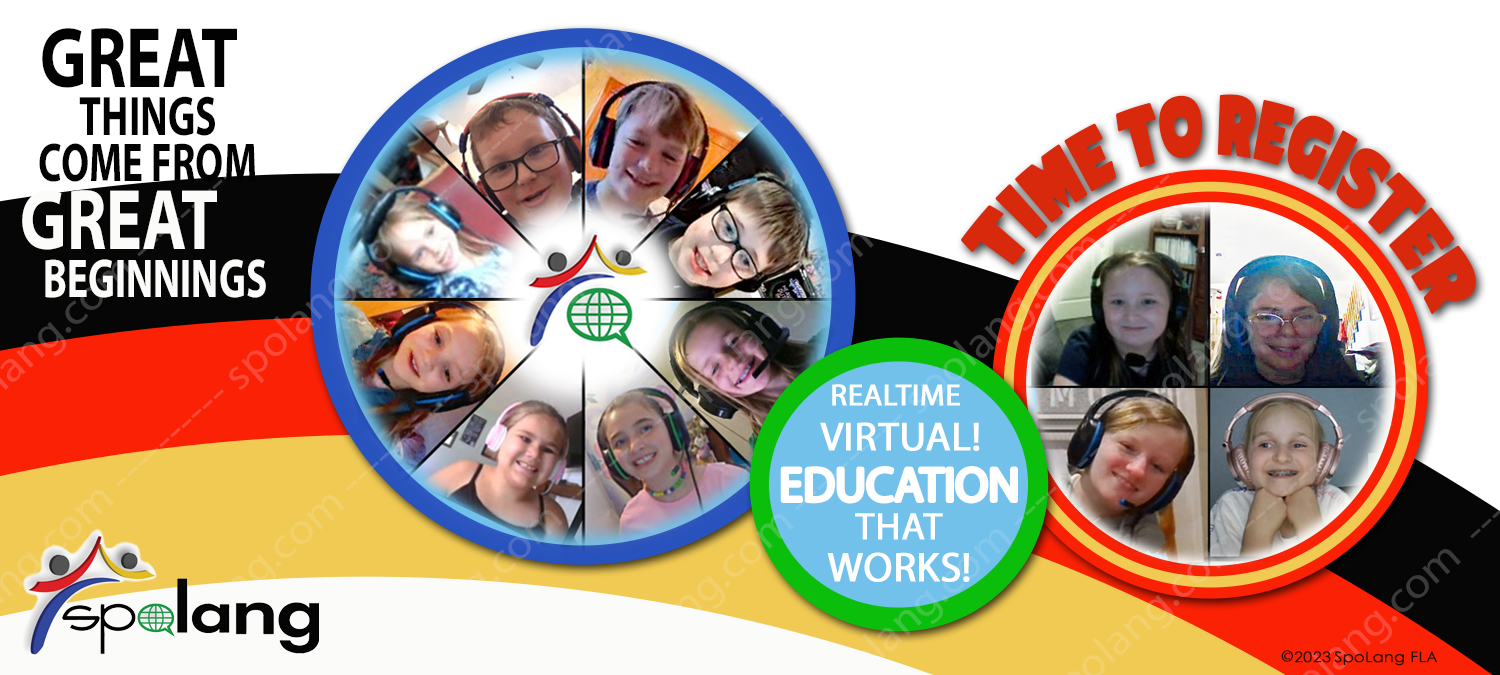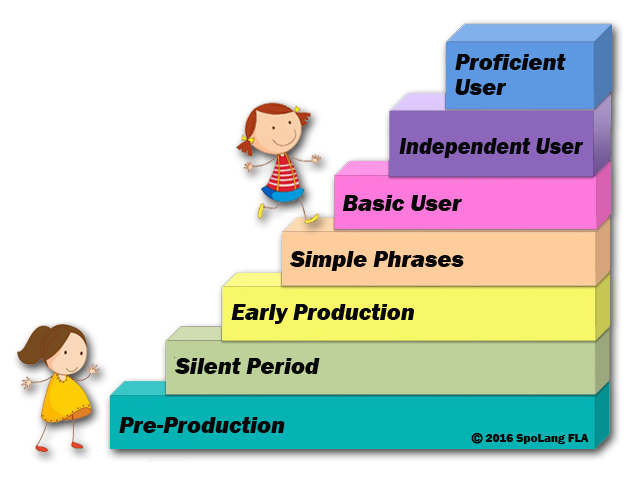Language Development
Language proficiency rather than age
In all levels, great emphasis is placed on the development of the target language skills.
Students are expected to speak the target language during class. Entering students will be assessed to determine their proficiency and are carefully placed at the appropriate level. Placement is determined by language proficiency rather than by age or length of previous exposure to the language. Listening, speaking, reading, and writing skills are combined with cultural and social practice to produce a complete learning and communication experience.
Your child will love to participate in the fun collection of songs, games, arts, movie making, and more.
Lessons plans are specially created for students 1st Grade through High School.
A maximum enrollment of 6 students per class enables excellent instruction to every student.
The small group size allows for greater personal interaction and more feedback between your child and the Instructor.
All the above enables SpoLang to provide a rich, fun filled, highly interactive class.

SpoLang creates an environment in which students literally live the language.
SPOLANG’S SEVEN STAGES OF SECOND LANGUAGE ACQUISITION
Anyone who has been around children who are learning to talk knows that the process happens in stages—first understanding, then one-word utterances, then two-word phrases, and so on.
A child learning a second language moves through seven predictable stages: Preproduction, Silent Period, Early Production, Simple Phrases, Basic User, Independent User, and Proficient User.
How quickly a student progress through the stages depends on many factors, including age, family background, level of formal education, and length of time enrolled at SpoLang.
SpoLang ties instructions for each student to his or her particular stage. Knowing this important information about each student allows SpoLang to work within his or her zone of proximal development—that gap between what students can do on their own and what they can with the help of more instructions.

• PROFICIENT USER:
– near-native level of speech
• INDEPENDENT USER:
– excellent comprehension
– makes few grammatical errors
• BASIC USER:
– good comprehension
– questions requiring more than a sentence response
– misunderstands jokes
• SIMPLE PHRASES:
– improving comprehension
– can produce simple sentences
– questions requiring phrase or short-sentence answers
– grammar and pronunciation errors
• EARLY PRODUCTION:
– limited comprehension
– produces one- or two-word responses
– key words and familiar phrases
– uses present-tense verbs
• SILENT PERIOD:
After children realize their first language is not working, they enter a silent period in which they barely speak and rely heavily on nonverbal means to communicate with others. The younger the child, the longer the silent period may last.
• PRE-PORDUCTION:
– minimal comprehension
– does not verbalize
– nods “yes” and “no”
– draws and points
